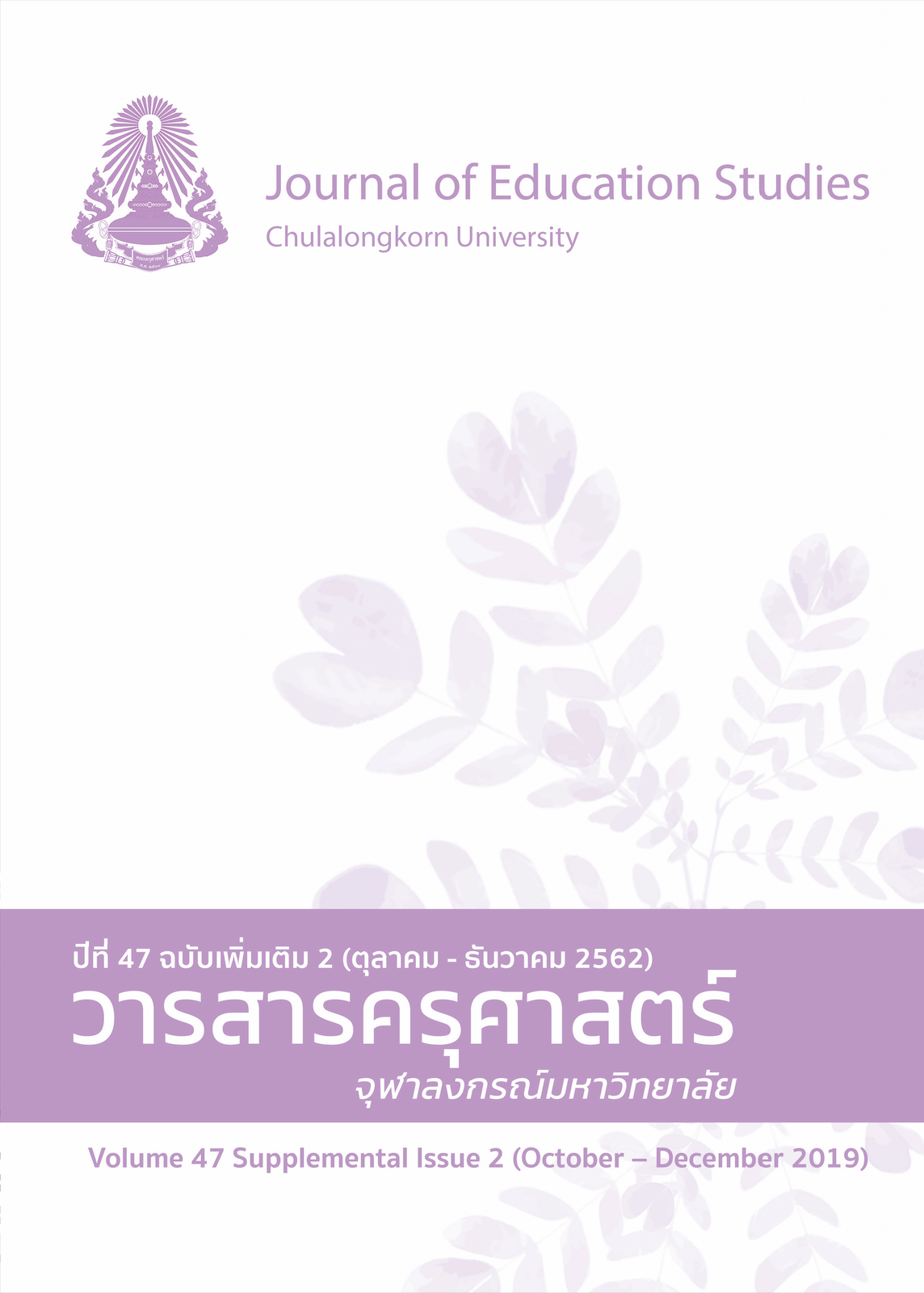Development of a Conceptual Framework for an Instructional Model Integrating the Code-switching and Total Physical Response Method to Enhance the English Ability of Kindergarteners
Keywords:
CONCEPTUAL FRAMEWORK, INSTRUCTIONAL MODEL, CODE-SWITCHING, TOTAL PHYSICAL RESPONSE, KINDERGARTENERSAbstract
The purpose of this research was to develop a conceptual framework of an instructional model integrating the code-switching and TPR method to enhance the English ability of kindergarteners. The framework was developed by reviewing relevant approaches, theories and empirical studies that include principles of teaching English for young learners, The Code-Switching, Total Physical Response Method (TPR), English ability of kindergarteners and empirical studies. The conceptual framework includes 4 principles: 1) developing listening comprehension skills, 2) using command and physical response, 3) using code switching naturally, and 4) always observing children’s understanding; The research includes; 4 steps of instruction: 1) recalling previous knowledge, 2) teacher demonstration, 3) practicing, and 4) wrapping up, and evaluating the English ability of kindergarteners for listening comprehension in words or sentences and transferring heard information. The developed conceptual framework will be used for developing an instructional model integrating the code-switching and total physical response method to enhance the English ability of kindergarteners.
References
ปัณฑิตา สำราญกิจ. (2551). สภาพปัญหาการดำเนินงานในโครงการจัดการเรียนการสอนตามหลักสูตรกระทรวงศึกษาธิการเป็นภาษาอังกฤษสำหรับเด็กปฐมวัย (วิทยานิพนธ์ปริญญามหาบัณฑิต ไม่ได้ตีพิมพ์). จุฬาลงกรณ์มหาวิทยาลัย, กรุงเทพมหานคร.
พิตรวัลย์ โกวิทวที. (2537). ทักษะและเทคนิคการสอนเขียนภาษาอังกฤษระดับประถมศึกษา. กรุงเทพฯ: สำนักพิมพ์แห่งจุฬาลงกรณ์มหาวิทยาลัย.
วนิดา แก่นจันทร์. (2545). การศึกษาสภาพการจัดการเรียนการสอนภาษาอังกฤษสำหรับเด็กวัยอนุบาลในโรงเรียน สังกัดสำนักงานคณะกรรมการการศึกษาเอกชนในกรุงเทพมหานคร (วิทยานิพนธ์ปริญญามหาบัณฑิต). สืบค้นจาก http://cuir.car.chula.ac.th/handle/123456789/10732
สุมิตรา อังวัฒนกุล. (2539). วิธีสอนภาษาอังกฤษ. กรุงเทพฯ: สำนักพิมพ์แห่งจุฬาลงกรณ์มหาวิทยาลัย.
ภาษาอังกฤษ
Ahmad, B. H., & Jusoff, H. K. (2009). Teachers’ code-switching in classroom instructions for low English proficient learners. Retrieved from http://ccsenet.org/journal/index.php/
elt/article/view/2363
Asher, J. J. (1979). Learning another language through actions: The complete teacher’s guide book. Los Gatos, CA: Sky Oaks Publication.
Brown, H. D. (2007). Principles of language learning and teaching (5th ed.). White Plains, NY: Pearson Longman.
Brownell, J. (2006). Listening: Attitudes, principles, and skills (3rd ed.). Boston, MA: Pearson.
Buck, G. (2001). Assessing listening. Cambridge: Cambridge University Press.
Chen, L. (2010). Application of total physical response in children’s ESL education. Retrieved from https://minds.wisconsin.edu/bitstream/handle/1793/43593/ChenLi.pdf?sequen
ce=4
Coffey, H. (2004). Code-switching. Retrieved from http://www.learnnc.org/lp/pages/4558
Hanim, A. A. (2013). The use of total physical response (TPR) to teach English vocabulary. Jurnal Pendidikan Bahasa Inggris STKIP PGRI Sidoarjo, 1 (1 April).
Krashen, S. D., & Terrell, T. D. (1983). The natural approach. Oxford: Alemany Press.
Krashen, S. D., & Terrell, T. D. (2000). The natural approach. Oxford: Pearson.
Lin, Z. (2012). Code-switching: L1-coded mediation in a kindergarten foreign language classroom. International Journal of Early Year Education, 20(4), 365-378.
Olsen, R. E. (1992). Cooperative learning and social studies. In C. Kessler (Ed.), Cooperative language learning. A teacher’s resource book (pp. 85-116). Englewood Cliffs, NJ: Prentice Hall.
Patimah, A. (2012). Teaching English vocabulary using total physical response method for kindergarten students at Paud Attakwa. Retrieved from http://publikasi.
stkipsiliwangi.ac.id/files/09220467-ai-patimah.pdf
Sariyati, I. (2013). The effectiveness of TPR (total physical response) method in English vocabulary mastery of elementary school children. Retrieved from http://ejournal.
undip.ac.id/index.php/parole/article/.../4458/pdf
Sehiling, Y., & Setiawan, S. (2014). The students’ attitudes toward the instructor’s code switching in EFL classroom. Retrieved from http://ejournal.unesa.ac.id/index.php/
language-horizon/article/view/6965
Sitauala, G. (2008). Act, don't explain: Total physical response at work. Journal of NELTA, 13(1-2), 80-86.
Valette, R. M., & Disick, R. S. (1972). Modern language performance objectives and individualizations. New York: Harcourt Brace Jovanovich Inc.
Yu, X. (2012). Total physical response for childhood English education in China. Retrieved from http://minds.wisconsin.edu/bitstream/handle/1793/61433/Yu,%20Xuewen.pdf




